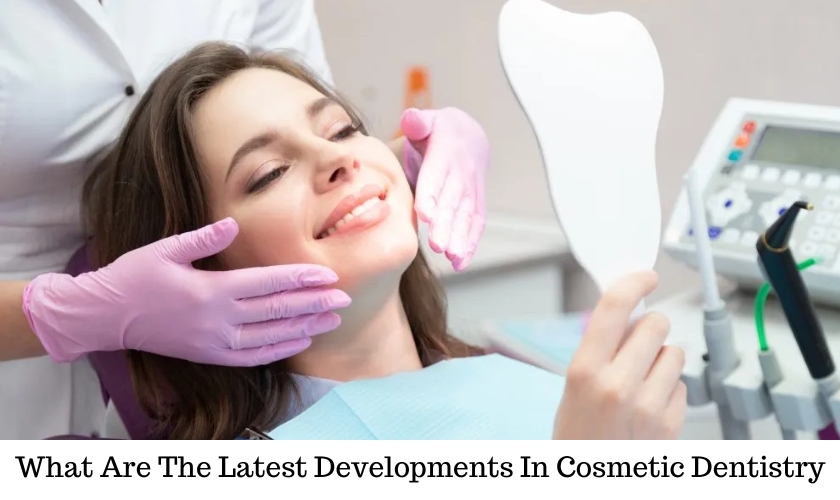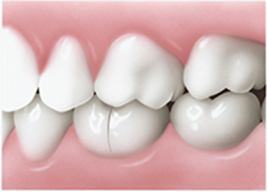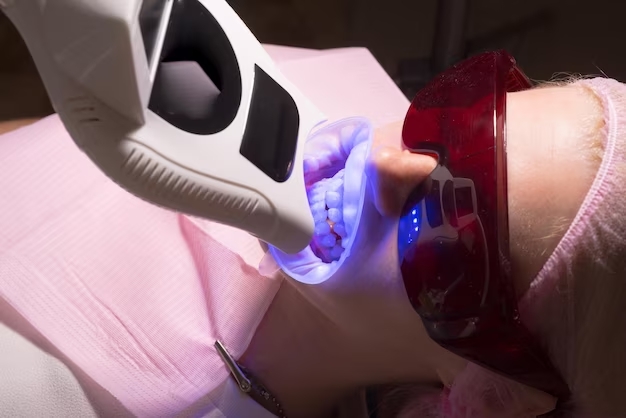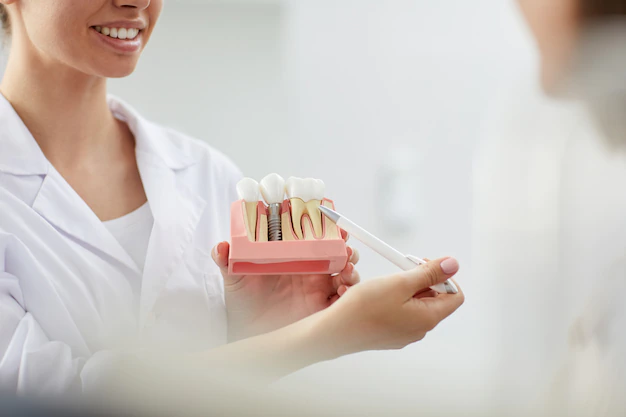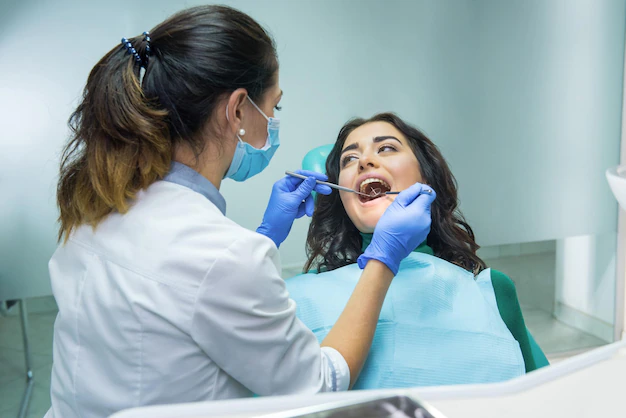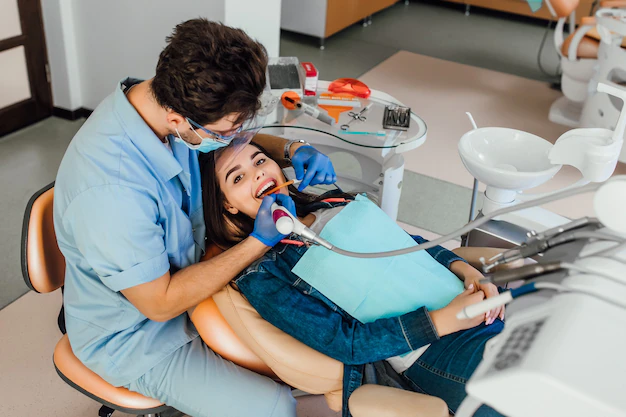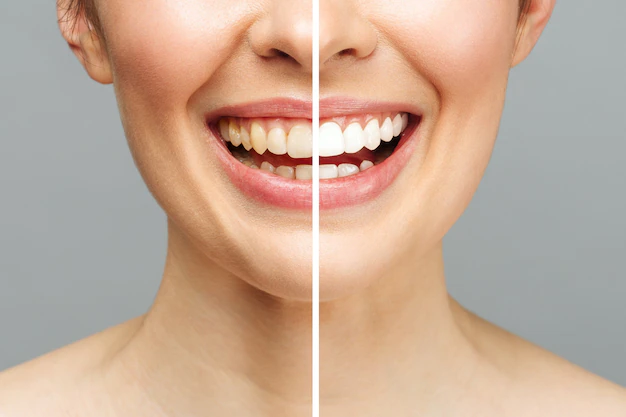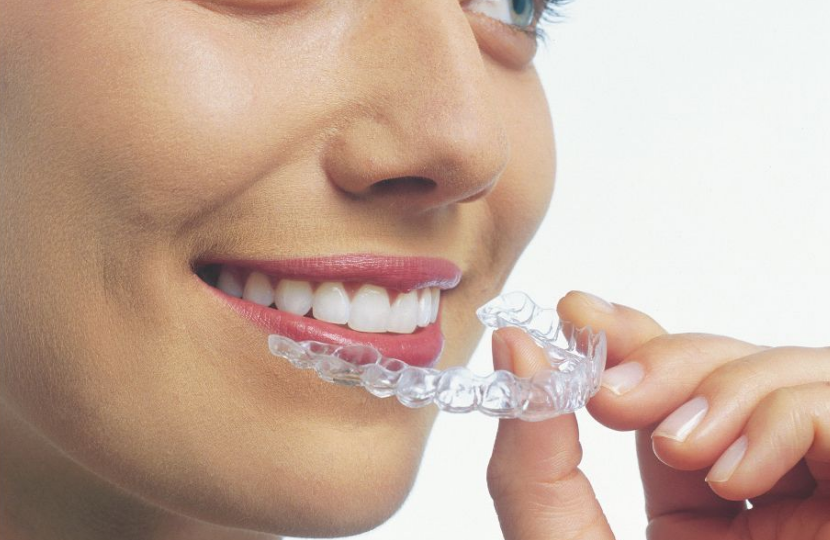Achieving a beautiful smile through Cosmetic Dentistry extends beyond mere aesthetics; it plays a vital role in elevating one’s self-confidence and overall sense of well-being. It has the power to enrich social interactions and create a lasting, favorable impact.
Cosmetic dentistry is concerned with the aesthetics of teeth, gums, and bite alignment. It includes various treatments that help enhance the smile’s aesthetics, such as teeth whitening, dental veneers, invisible aligners, dental implants, and digital smile design.
Teeth Whitening
A. Latest advancements in teeth whitening treatments:
Teeth whitening has become increasingly popular, and recent innovations have made it more efficient and convenient.
B. Laser teeth whitening :
Laser technology is widely used in professional dental clinics to whiten teeth quickly and effectively. This procedure involves applying a whitening gel to the teeth and then using a laser to activate the whitening agent, resulting in a brighter smile.
C. In-office professional whitening kits:
Dentists now offer professional-grade teeth whitening kits that patients can use at home. These kits consist of custom-made trays and a potent whitening gel, providing professional-level results without requiring multiple dental visits.
D. Whitening toothpaste with advanced formulas:
Toothpaste brands have developed advanced whitening formulas that contain ingredients like hydrogen peroxide and baking soda to remove surface stains and gradually whiten teeth. These toothpastes are easily accessible and offer a more affordable option for maintaining a bright smile.
Dental Veneers
A. Explanation of dental veneers and their benefits:
Dental veneers are thin porcelain or composite resin shells that are applied to the front surface of teeth to improve their look. They can address cosmetic issues such as discoloration, chipped or misaligned teeth, and gaps.
B. Introduction to the latest types of veneers:
The advancements in cosmetic dentistry have introduced new types of veneers that provide even better aesthetic results.
C. Porcelain veneers:
Porcelain veneers are well-known for their tensile strength and natural look. They are custom-made to match the color, shape, and size of the patient’s existing teeth, resulting in a seamless smile transformation.
D. Composite veneers:
Composite veneers are a less expensive alternative to porcelain veneers. They are directly applied to the teeth and can be sculpted and shaped by the dentist to achieve the desired cosmetic outcome.
E. No-prep veneers:
No-prep veneers are ultra-thin veneers that require minimal to no tooth preparation before placement. They offer a conservative approach to smile enhancement and can be a suitable option for patients with minor cosmetic concerns.
Invisible Aligners
A. Overview of invisible aligners
Invisible aligners, such as Invisalign, have revolutionized orthodontic treatment by offering a discreet and comfortable alternative to traditional braces.
B. Discussion on the latest innovations in clear aligner technology
Clear aligner technology has advanced significantly in recent years, providing more precise and efficient teeth straightening options.
C. SmartTrack technology
SmartTrack technology, used in some clear aligner systems, offers a more accurate fit and better control over tooth movements, resulting in shorter treatment times and enhanced comfort.
D. Accelerated treatment options
New accelerated treatment options, such as high-frequency vibration devices and dental lasers, can help speed up teeth straightening, reducing treatment duration by several months.
E. Customized treatment plans with AI
Artificial intelligence is now being integrated into clear aligner treatment planning. AI algorithms analyze patient data to create personalized treatment plans, ensuring optimal outcomes for each individual.
Dental Implants
Importance Of Dental Implants In Cosmetic Dentistry
Dental implants are crucial in cosmetic dentistry as they provide a permanent solution for replacing missing teeth. They not only restore oral functionality but also significantly improve the appearance of the smile. Unlike dentures or bridges, implants are surgically placed into the jawbone, serving as artificial tooth roots. This provides stability and support to the replacement tooth or crown, resulting in a natural-looking smile.
Discussion On Recent Advancements In Dental Implant Procedures
Advancements in dental implant procedures have brought about significant improvements in efficiency and success rates. These advancements include:
All-on-4 implants:
Cosmetic Dentistry’s cutting-edge technique enables complete arch restoration using only four dental implants. This method provides a faster and more economical option for patients in need of multiple teeth replacements. The All-on-4 implants are strategically positioned in areas of superior bone density, ensuring robust support for an entire arch of prosthetic teeth.
Mini dental implants:
Mini implant teeth have a smaller diameter than regular implants. They are commonly used when there is limited bone size or for securing removable dentures. These implants require less invasive surgery and shorter healing time, making them a convenient option for certain patients.
Same-day implant options:
Recent advancements have allowed some patients to receive dental implants and a temporary crown or bridge in a single visit. This immediate restoration option eliminates the need for multiple visits and allows individuals to leave the dental office with a fully functional smile.
Digital Smile Design
A. Introduction to digital smile design
Digital Smile Design (DSD) is a cutting-edge technology that revolutionizes cosmetic dentistry by enabling dentists to carefully plan and design a patient’s ideal smile using digital tools and software. It involves capturing digital images, videos, and scans of the patient’s mouth, which are then analyzed and manipulated to create a customized treatment plan.
B. Explanation of how it revolutionizes cosmetic dentistry
Digital Smile Design allows dentists to communicate more effectively with their patients, visualizing and designing the desired outcome before any procedures are performed. By utilizing computer-aided design (CAD) software, dentists can precisely simulate the final result, ensuring patient satisfaction and reducing the potential for errors or misunderstandings.
C. Benefits of digital smile design technology
The advantages of Cosmetic Dentistry technology are plentiful. It fosters a collaborative process involving the dentist and the patient, enabling them to actively engage in crafting their desired smile. Moreover, Cosmetic Dentistry assists in attaining optimal aesthetics and aligning with the patient’s facial attributes. Through digital treatment planning, Baymeadows dentists can secure precise and predictable outcomes, ultimately resulting in increased patient contentment.
The latest innovations in cosmetic dentistry, such as dental implants and digital smile design, offer incredible advancements in achieving the perfect smile. From All-on-4 implants to same-day implant options, there are now more efficient and convenient solutions for tooth replacement. Likewise, digital smile design technology revolutionizes treatment planning, enhancing communication and precision. Embrace these advancements and consult with your dentist to explore the opportunities for a beautiful and confident smile.

